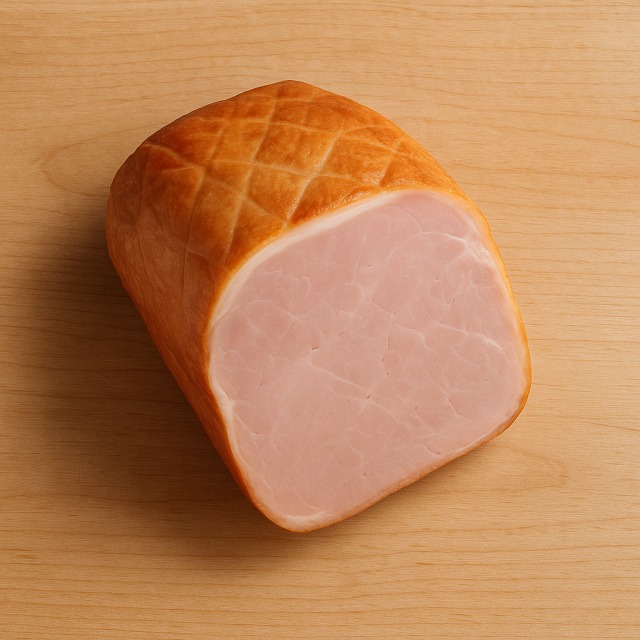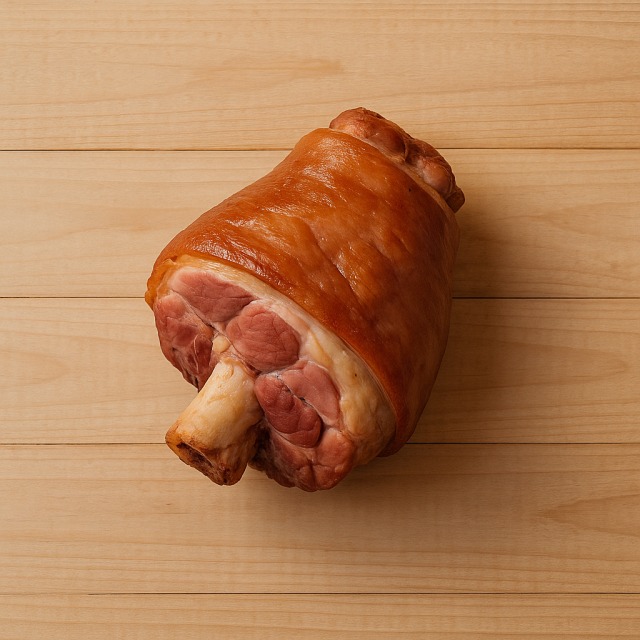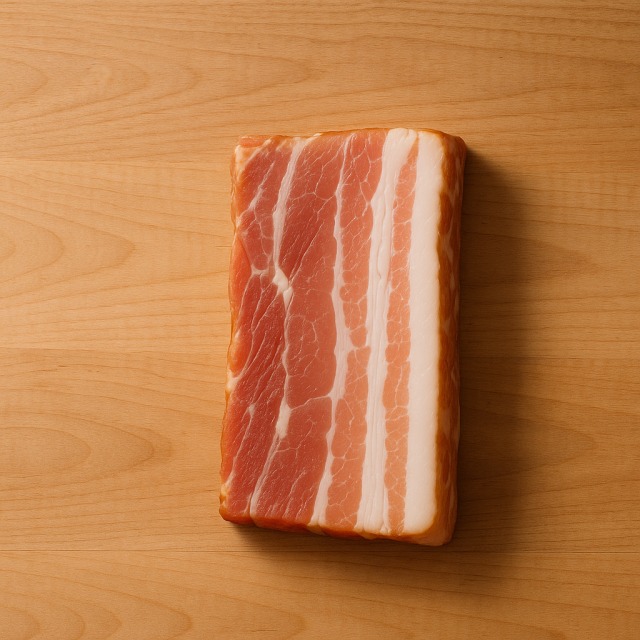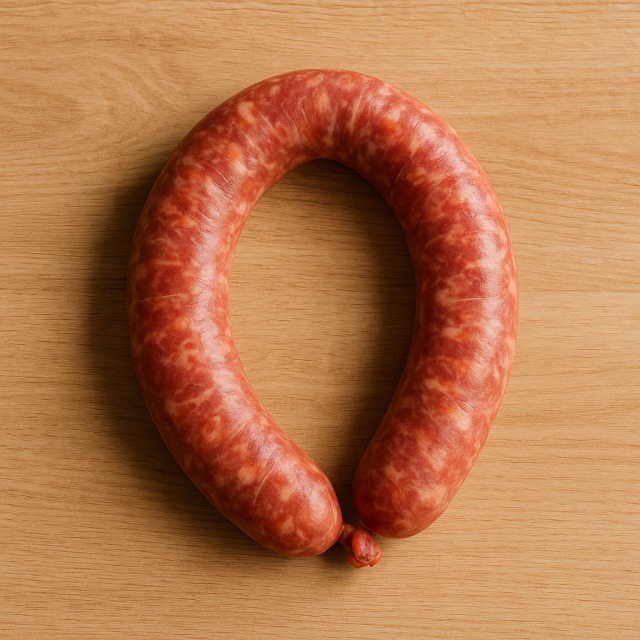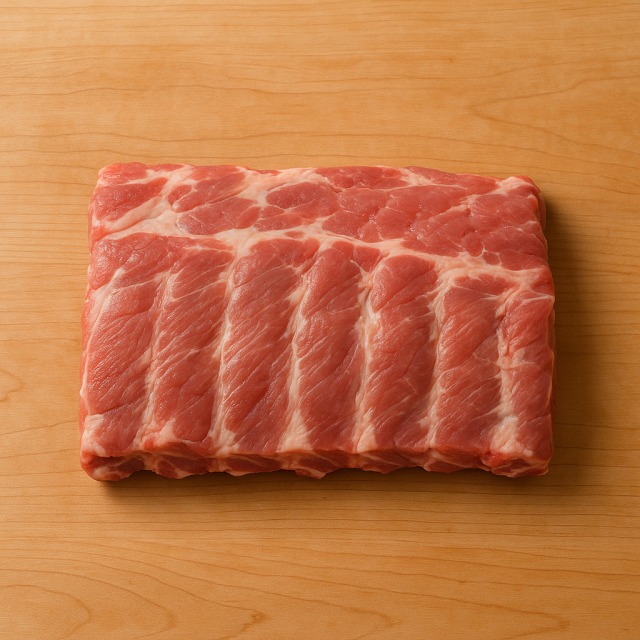Calorie Chart / Meat & Eggs / Diced bacon
How Many Calories Are in Diced bacon?
Calculation of the nutritional value & Recommended Dietary Intake of diced bacon
For g and a calorie requirement of kcal
| Calories 141 kcal | Proteins 9 g | Lipids 12 g | Carbohydrates 0.3 g |
| 7% | 12% | 18% | 0% |
Health benefits of diced bacon
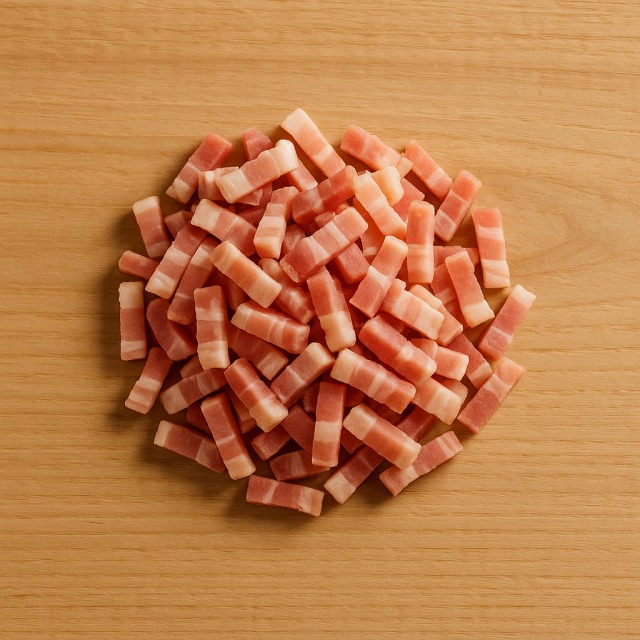
Diced bacon - 100g
Calories 281 kcal
Proteins 18 g
Lipids 23 g
Carbohydrates 0.5 g
Diced bacon belongs to the high-calorie food group: 100 g already concentrates a significant amount of calories compared with lean meats. These calories come mostly from unsaturated and saturated fats, which also carry fat-soluble flavors that make dishes more satisfying, potentially helping you avoid piling up extra calories elsewhere. Beyond calories, diced bacon provides complete proteins rich in all essential amino acids, plus B-group vitamins (B1, B3, B6, B12) that help convert food into energy. Its iron and zinc content supports oxygen transport and immunity, while phosphorus and selenium contribute to healthy bones and antioxidant defense.
Because the pork is cured, sodium is high; people watching their daily calorie intake often monitor sodium too, so portion control is advisable. Historically, small cubes of salted pork were used by peasants to enrich otherwise low-calorie vegetable stews without refrigeration. Knowing this background can motivate modern cooks to exploit the same intense taste: a modest sprinkle brings big flavor for relatively few extra calories per serving.
Tips for incorporating diced bacon into a balanced diet
Use diced bacon as a flavor booster rather than a main protein to keep total calories under control. Sauté 20 g with onions, then toss through steamed green beans; you gain texture while adding far fewer calories than a full bacon portion. For brunch, mix a tablespoon of crisped cubes into scrambled egg whites for a high-protein plate that is lighter in calories than a classic full English.
Need comfort food without excessive calories? Try a lighter "carbonara" by replacing part of the bacon with grilled mushroom cream and using whole-wheat pasta; you still get the smoky note while trimming calories. In salads, a handful of cubes pairs beautifully with raw spinach, diced apple, and a vinaigrette made with yogurt to keep calories modest.
Classic French recipes such as Quiche Lorraine or tartiflette are delicious but calorie-dense; decrease the diced bacon by one-third and boost vegetables like zucchini or broccoli to cut calories without sacrificing taste. Remember, the goal is balance: intense flavor means you can satisfy cravings with fewer overall calories.
Frequently Asked Questions
- How many calories are in diced bacon?
- There are 281 kcal per 100 g.
- Is diced bacon too high in calories for a weight-loss diet?
- Not necessarily; by limiting the portion to 15–20 g, you add flavor for roughly 45–55 calories, which can fit into a calorie-controlled plan.
- How can I cut calories when cooking with diced bacon?
- Render the cubes first, discard excess fat, and combine them with low-calorie vegetables like zucchini or cauliflower; this stretches flavor while keeping calories in check.
- Does diced bacon provide quality proteins despite its calories?
- Yes, 100 g delivers 18 g of complete proteins, so even small servings supply valuable amino acids with relatively few additional calories.
- Which low-calorie ingredients pair well with diced bacon?
- Try broccoli, pumpkin, or lettuce; their fiber and water volume offset the calories from the bacon.
- Can athletes use diced bacon to increase calories for bulking?
- Certainly; adding 30 g to a bowl of rice and chicken breast gives an extra 85 calories plus sodium for electrolyte balance.
Similar foods
Information provided by Calorie Menu may contain inaccuracies or errors. It cannot, under any circumstances, substitute medical advice or medication.

